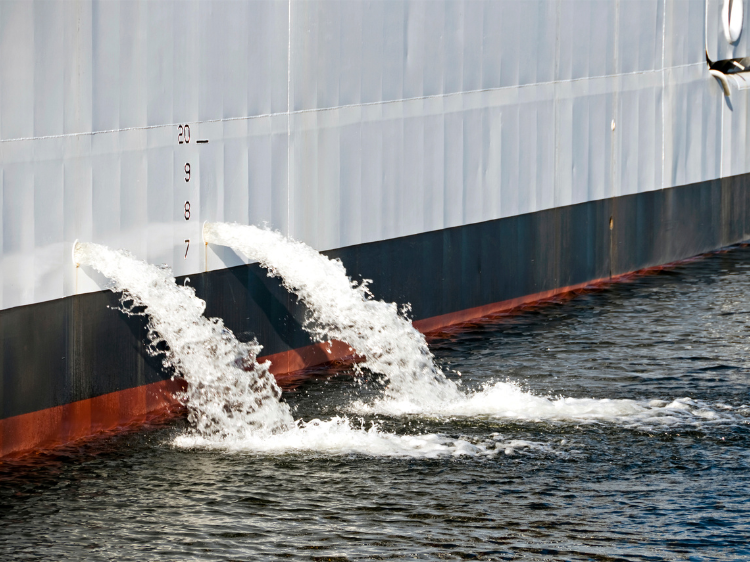Ballast water treatment is a crucial process in the maritime industry, aimed at addressing the environmental impact of ballast water discharge from ships. The introduction of foreign aquatic species through ballast water has significant ecological and economic consequences, making it essential to adopt effective treatment systems. The International Maritime Organization (IMO) has established regulations to ensure that ballast water treatment is carried out efficiently and safely. Understanding the importance and methods of ballast water treatment system is essential for shipowners and operators, particularly in India where maritime activities are integral to the economy.
Importance of Ballast Water Treatment
Ballast water is used in ships to maintain stability and maneuverability during voyages. When ships take on ballast water in one region and discharge it in another, they inadvertently introduce non-native species into new environments. These species can become invasive, out-competing local flora and fauna, disrupting ecosystems, and causing significant economic damage. To mitigate these risks, the Ballast Water Treatment System (BWTS) was developed to treat and manage ballast water before it is discharged.
Ballast Water Management Convention
The IMO’s Ballast Water Management Convention (BWMC) sets global standards for the treatment and management of ballast water. Under this convention, ships are required to implement a BWTS that complies with the D-2 standard, which specifies the maximum allowable concentration of viable organisms in discharged ballast water. The BWMC aims to prevent the spread of invasive species and protect marine biodiversity.
Components of a Ballast Water Treatment System
A typical Ballast Water Treatment System consists of several components designed to remove or neutralize harmful organisms in ballast water. These components include:
- Filtration Systems: Filtration is the first step in ballast water treatment, where large particles and organisms are physically removed from the water. This process typically involves the use of fine mesh filters or screens.
- Disinfection Technologies: After filtration, the water undergoes disinfection to eliminate any remaining microorganisms. Common disinfection methods include:
- UV Treatment: Ultraviolet (UV) light is used to inactivate microorganisms by damaging their DNA, and preventing them from reproducing.
- Chemical Treatment: Chemicals such as chlorine, ozone, or hydrogen peroxide are added to the water to kill or neutralize organisms.
- Electrochlorination: This process generates chlorine through electrolysis of seawater, effectively disinfecting the ballast water.
- Monitoring and Control Systems: BWTS are equipped with sensors and control systems to monitor water quality and ensure compliance with regulatory standards. These systems provide real-time data on the effectiveness of the treatment process.
Statistic and Famous Ballast Water Treatment System Quote
According to the United Nations Conference on Trade and Development (UNCTAD), over 80% of global trade by volume is carried by sea, highlighting the significance of effective ballast water management in maintaining ecological balance and protecting marine environments.
As the famous marine scientist Dr. Sylvia Earle once said, “With every drop of water you drink, every breath you take, you’re connected to the sea.” This quote underscores the interconnectedness of human activities and the health of marine ecosystems, emphasizing the importance of responsible ballast water management.
Challenges and Solutions in Implementing BWTS
Implementing an effective Ballast Water Treatment System poses several challenges, including:
- Technical Complexity: BWTS must be tailored to fit the specific design and operational requirements of different ships. This requires careful planning and engineering to ensure proper integration and functionality.
- Regulatory Compliance: Meeting the stringent standards set by the IMO and other regulatory bodies can be challenging. Shipowners and operators must stay updated on evolving regulations and ensure their BWTS are compliant.
- Cost Considerations: Installing and maintaining BWTS can be expensive. However, the long-term benefits of preventing ecological damage and avoiding regulatory penalties make it a worthwhile investment.
- Operational Efficiency: Ensuring that BWTS do not interfere with the normal operations of the ship is crucial. Systems must be designed to work efficiently without causing delays or disruptions.
Best Practices for Effective Ballast Water Treatment
To achieve effective ballast water treatment, shipowners and operators should consider the following best practices:
- Regular Maintenance: Regular maintenance and inspection of BWTS are essential to ensure they function optimally. This includes cleaning filters, checking disinfection equipment, and calibrating monitoring systems.
- Crew Training: Proper training of the crew on the operation and maintenance of BWTS is crucial. Well-trained personnel can identify and address potential issues promptly, ensuring the system’s reliability.
- Monitoring and Reporting: Continuous monitoring of ballast water quality and regular reporting to regulatory authorities help demonstrate compliance and identify areas for improvement.
- Collaboration and Innovation: Collaborating with technology providers, regulatory bodies, and other stakeholders can drive innovation and improve the effectiveness of BWTS.
Conclusion
Ballast water treatment is a vital process for safeguarding marine environments and preventing the spread of invasive species. By implementing an effective Ballast Water Treatment System and adhering to international standards, the maritime industry can contribute to a healthier and more sustainable future for our oceans. For more information on ballast water treatment and to explore advanced BWTS solutions, visit Ship Automation’s website and discover how you can enhance your vessel’s compliance and operational efficiency.
 :
https://in.pinterest.com/shipautomation11/
:
https://in.pinterest.com/shipautomation11/

